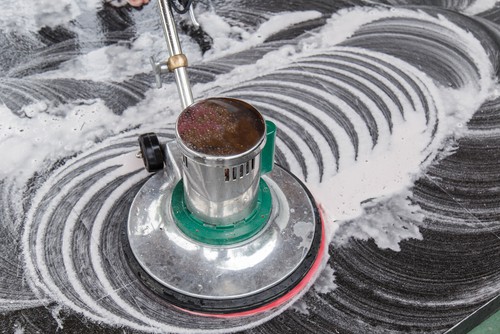Cleaning Carpets Without Soaking Them.
Don’t Wet it, Unless You Can Dry it.
In my early days of cleaning, I relied on my very expensive & heavy duty steam cleaning van to clean carpets for me. I knew how to run the machine, and the machine knew how to clean the carpets. I knew little of the cleaning process. Oftentimes, this process resulted in overly-wet carpets, stains mysteriously returning, and complaints of wet carpets, days later.
Now, many years later, I find myself a seasoned professional with years of experience. Now, it is I who clean the carpets, and those expensive machines on which I formerly relied, have now been relegated to mere tools on my belt. Those machines ultimately were made with the singular goal of rinsing out the carpet with really hot, soapy water. and believe it or not, that was the root of the problem. Years of experience have taught me this: One can’t hope to literally “Wash” a carpet clean, because, one is not able to Dry the carpet, once washed.
No More Wet Carpets
Todays’ technology allow us to create a foam out of our existing cleaning products, which provides for the drastic reduction in water use, and offers the cleaner the opportunity to manage the cleaning process.

You Can’t Rinse a Carpet
The goal is to remove the soiling without soaking the carpet, and the key to that process is limiting water, which is exactly opposite of the old methodologies. The steam cleaning process is to rinse the carpet until it is clean, which sounds very reasonable, but one soon finds out that the machines cannot adequately remove the rinse water. Instead, modern techniques for cleaning carpets use what I would describe as a “sponge bath method”. We use 90 percent less water and specially formulated foaming solutions to transfer the soiling and dirt – out of the carpet and directly into the foam. Being that foam is something we can remove adequately, we simply remove the foam. That’s how we resolve the decades old soaking wet carpet dilemma.
Wet Carpets Are a Health Hazard
It turns out that wet carpets provide a dark, warm and fuzzy breeding ground for mold, mold spawning, and growth. Given that molds can contain neurotoxins, this is a situation that is to be avoided at all costs. See: Carpet Steam Cleaning and Mold Growth
Cleaning a Rug With 90 percent less water – YouTube Short
How to Dry a Soaked Carpet
Should you find yourself knee deep in soaking carpet after a failed attempt at self-cleaning, or an over-zealous steam cleaning service, here’s some tips on how to dry it.
- Best option: Have the service that caused the problem, return to correct the problem. The machines on hand can remove much more water, it just takes time, patience and effort. If the cleaner hopes to keep you as a client, they’ll do the right thing.
- Wet Vac: It may take hours, but you need to suck up as much water as possible. If you can’t get your service to return to pull more water out, pull out the wet vac and get to work.
- Water Claw: Can be purchased on Amazon. A water claw can attach itself to the carpet and pull water out, virtually hands free. This might be a good investment for those who prefer to clean their own carpets and will be using the claw over and over again. Cost: about $50 dollars.
- Towels: You can lay down clean, dry bath towels and step on them to absorb a significant amount of water out of a wet carpet.
- Air conditioning and/or de-humidifiers. These will both remove water from the air over time, speeding the drying process.
- Ceiling fans, air movement. Moving air hastens evaporation, and combining evaporation with above step of de-humidifying will vastly speed drying time.
